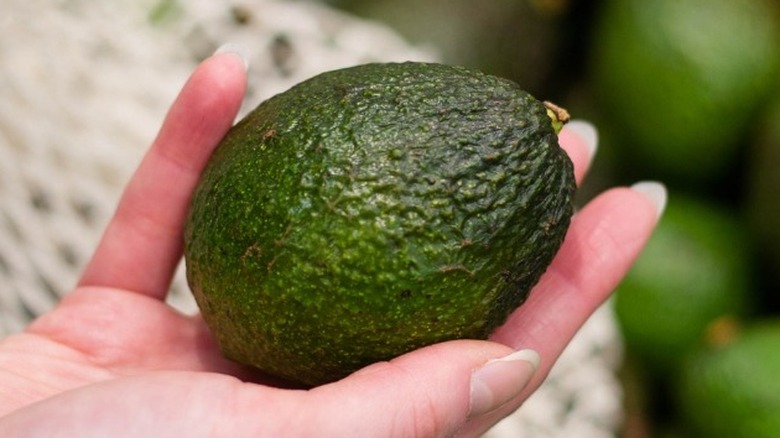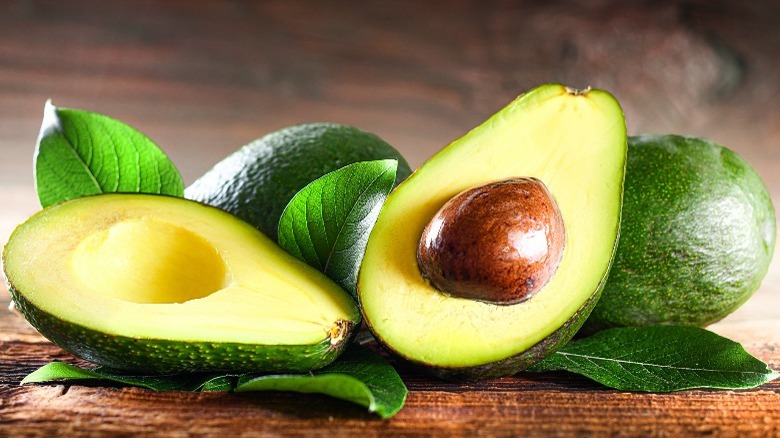Keeping Avocados Fresh Is Easier Than You Think
An avocado cannot be rushed into peak ripeness. Like all good things, this process takes time. Avocados ripen after they are harvested from — you guessed it — avocado trees, according to the Hass Avocado Board. After they are picked, their hard, shell-like exteriors turn from light green to a much darker hue, one that becomes almost black as it softens. You'll know an avocado is ready to become spreadable on some avocado toast when you can press into the flesh and feel a soft interior that holds together on its own.
It's important to plan ahead if you're browsing for avocados at the grocery store. If you anticipate eating avocados the same day you buy them, you should pick out ones that are already at their ripest. But if you eat one every few days, or plan to stash them until a late-night craving for guacamole strikes, you'll want to pick avocados on a spectrum of ripeness so they don't spoil in the meantime (via Avocados From Mexico). If you do buy avocados that are ready to eat, you can preserve their ripe state in the fridge for a few days. However, if you need the avocado to ripen further, it's best to leave it at room temperature.
After waiting for an avocado to ripen, you might be tempted to eat the entire fruit in one sitting. If that's the case, no judgment here! But if you want to save part of your avocado for later, there are a few tricks to keeping it fresh for as long as possible.
For a long shelf-life, leave an avocado's skin and pit intact
In terms of taste, texture, and nutrition, avocados are veritable green goldmines. If you're just cooking for one, there's a chance you don't eat an entire avocado in one sitting — which also means you most likely want to save whatever you don't use or eat for a later date. But that can be tricky. Over time, the green flesh inside the fruit will turn brown. That's because oxygen interacts with the flesh, and this natural browning — also known as oxidization — can make an avocado look unappealing, even if it doesn't affect the fruit's taste (via Live Science).
You should only remove the skin and seed from the part of the avocado you plan on eating. Keeping the unused part of the fruit intact, pit and skin included, prevents the enaction of the oxidization process, as the chemicals released by both serve as counteracting agents, per Live Science. But if you've already disassembled your avocado, don't be disheartened: You can store it in an air-tight container with plastic wrap directly on the flesh (via Avocados from Mexico). You can also add a few squeezes of citrus juice to better preserve the fruit.
Finally, if you need long term storage for avocados, there's always the freezer. Per the Food Network, whole avocados can be frozen for as long as three months, though be warned — their consistency can easily change to something a bit mushier when you eventually thaw them.

